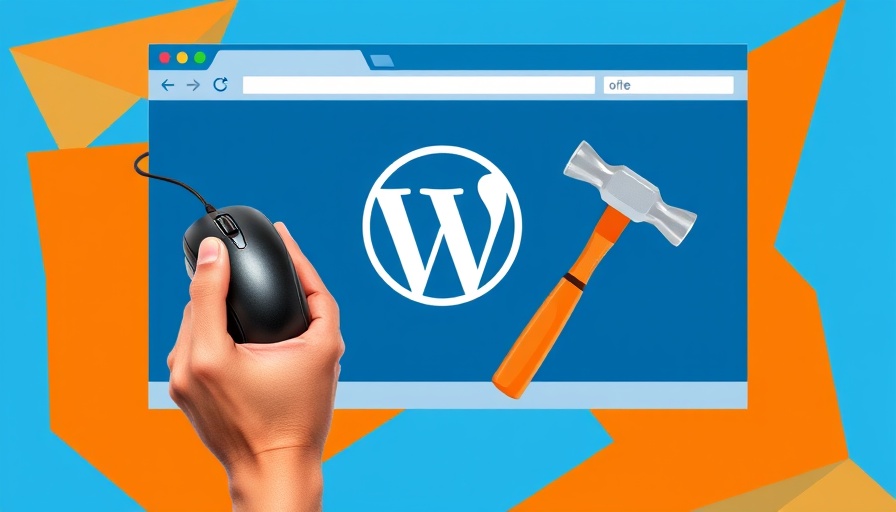
Recognizing the Signs: Is It Time to Redesign Your Website?
In the rapidly evolving digital marketplace, recognizing when to redesign your website is crucial for small and medium-sized business (SMB) owners. Many business leaders may find themselves asking this vital question: How do I know when my website is no longer serving its purpose? Today, we’ll explore the critical signs that indicate it’s time for a redesign and share some actionable steps to help you along the way.
The Evolution of Website Design: A Brief History
From their humble beginnings, websites have transformed dramatically over the years. Initially, functionality was the primary focus—success was determined by whether it worked. However, as customer expectations soared, so did the need for aesthetic beauty and user-centric design. Remember when the goal was to simply go live? Fast forward to today, where a mere online presence without engaging content or seamless navigation can drive potential customers away. This evolution illustrates the necessity of continually evaluating your online platform.
Are You Experiencing High Bounce Rates?
High bounce rates often indicate something is amiss with your website. If customers are leaving your site shortly after visiting, it may suggest that your layout, content, or even loading speeds are off-putting. According to a study, 75% of users judge a website’s credibility based on its visual appeal. If potential customers are bouncing away, this is your cue to consider a redesign.
Understanding Website Redesign vs. Refresh
Many business owners confuse a website redesign with a simple refresh. A redesign is more extensive and aimed at fundamentally altering the content, layout, and structure of your site to improve user engagement and conversion rates. In contrast, a refresh focuses on minor updates, like changing colors or fonts. If your business has undergone significant changes or you’re experiencing consistent drop-offs in site performance, it's likely time for a full redesign.
Real-World Impact: Customer Loyalty Case Study
Consider the case of an upscale retail boutique that faced declining sales due to outdated website design. After conducting a thorough analysis, the owners realized their site was not optimized for mobile visitors—a significant oversight, especially as mobile shopping rises. By investing in a full redesign with an emphasis on mobile-friendly architecture, user-friendly navigation, and eye-catching visuals, they saw a 40% increase in engagement, which translated into a remarkable rise in sales and customer loyalty.
Technological Advances in Website Design
Embracing new technologies can also inform your decision to redesign. With advancements in AI and customer analytics, SMBs can now harness tools that deliver personalized experiences for site visitors. Incorporating modern design elements and technologies can keep your business competitive while enhancing user satisfaction. For example, using HubSpot’s AI Website Generator to visualize prototypes can help refine your design before fully committing.
SEO Relevance: A Vital Consideration
SEO forms a critical backbone of any website’s success. If your site has not been redesigned in several years, chances are your SEO strategies are outdated too. As search engines, especially Google, continue to evolve, so must your approach. Utilizing real-life SEO case studies can guide you in identifying the best practices for content structuring and keyword optimization in a redesigned website. Businesses that have taken this route often report substantial traffic increases and a stronger online presence.
Actionable Steps to Start Your Redesign
So you've recognized the need for a redesign—what are the first steps? Begin by conducting a comprehensive audit of your current website. Analyze what’s working, what’s not, and gather feedback from customers. Use templates and resources available to SMBs to guide your redesign strategy. Tools like the free website redesign workbook offer valuable guidance and allow you to plan effectively while considering your redeployment budget.
Conclusion: Take Action to Stay Competitive
In conclusion, recognizing when it's time for a website redesign is essential for an SMB’s success. From boosting user engagement and improving conversion rates to optimizing for SEO and aligning with current design trends, a redesign can be a game changer for your business. As we continue to navigate this digital landscape, the question is not just whether your website needs a makeover—it’s how you’re going to take it to the next level. Ready to start your redesign journey? Download our free workbook to access templates and resources that can simplify your process and drive results!
 Add Row
Add Row  Add
Add 




Write A Comment